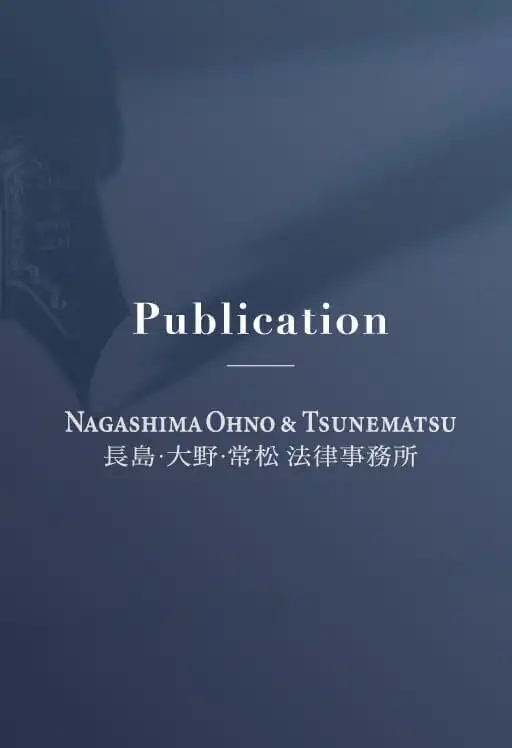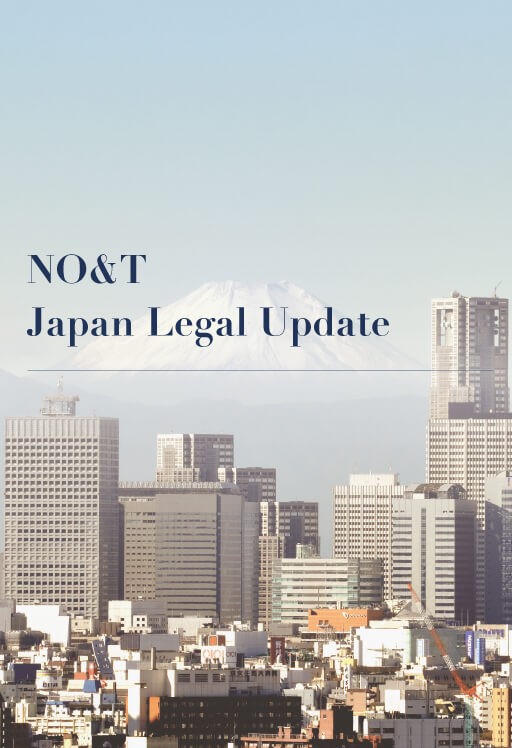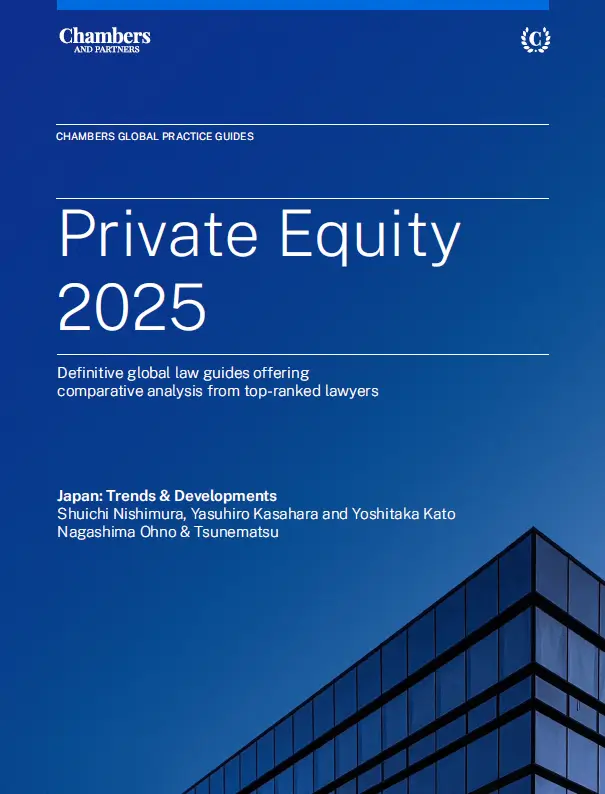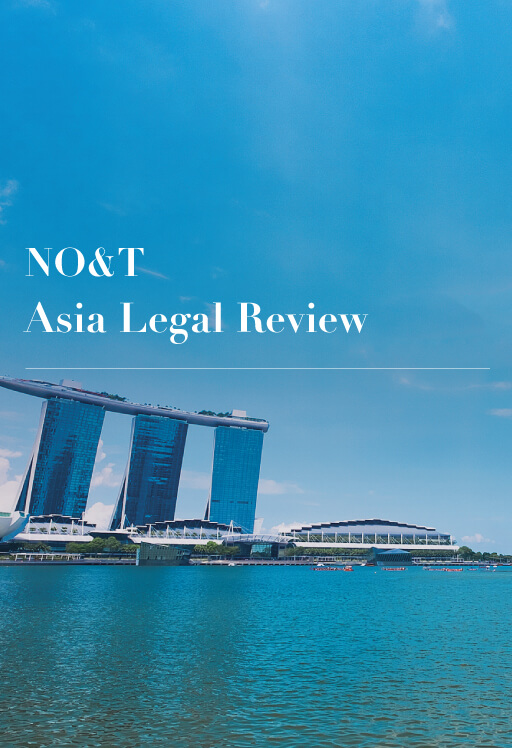
NO&T Thailand Legal Update
Overview of this article is also available via Podcast.
The NO&T Podcast – EN
”Amendment of the Civil and Commercial Code – Key highlights to corporate law (Thailand)”
On 14 September 2022, a bill on the amendment to the Civil and Commercial Code (the “Bill”) was approved by Parliament. In addition to the Bill, a law imposing criminal liability on partnerships and companies, the so-called Act Prescribing Offences related to Registered Partnerships, Limited Partnerships, Limited Companies, Associations and Foundations of 1956 (“Act on Offences of Companies”), was approved on 18 July 2022 to reflect the change proposed by the Bill. In this connection, the laws on partnerships and companies are once again being modernized to facilitate entrepreneurs in corporate governance in Thailand and the concept of merger is newly introduced as an alternative to amalgamation.
The amendments were proposed because certain provisions of the Civil and Commercial Code (the “CCC”) are considered to be obsolete, to lack technology-supported functions, to be unnecessarily burdensome for business operators, and to impede the promotion of Thailand’s competitiveness as an investment destination. The amendments are for example the provision setting the minimum number of promoters for the establishment of a private company to three (3) persons or the absence of a provision to determine the deadline of a dividend payment. In addition, the Bill intends to support agility in company restructuring by introducing the concept of merger as an alternative to amalgamation.
We selected only the material changes and divided them into the following three (3) groups for ease of understanding:
The Bill reduces the minimum number of promoters from the current three (3) persons to two (2) persons. This number will automatically apply to the minimum number of shareholders as well. As a consequence, a company needs to maintain two (2) shareholders continuously, and if the number of shareholders is reduced to one (1) person, it will be subject to dissolution by the court order.
Presently, the MOA will become invalid if the promoters do not register the incorporation within ten (10) years. The Bill shortens the period of validity of the MOA to three (3) years.
Under the current Section 1128 of the CCC, every share certificate of the company is simply required to be signed by at least one (1) director. It was once interpreted that it is no longer necessary to affix a company’s seal, even if the company has registered its seal. However, the Bill aims to require that, if the company has registered its seal, it must affix the company’s seal on the share certificate. If it has not registered its seal, the company is not required to affix the seal on its share certificate.
Following the change of the practice of the e-meeting under Royal Decree on Meetings via Electronic Means of 2020, Notification of Ministry of Digital Economy and Society Re: Standards for Maintaining Security of Meetings via Electronic Means of 2020 dated 12 May 2020 (as amended) and the recent amendment to the Public Limited Companies Act※1, the Bill finally affirms that the board of directors’ meeting of a limited company may be held by electronic means. The directors who attend a meeting electronically will be counted for quorum purposes and entitled to vote. However, this is based on the condition that such electronic meeting also complies with the requirements prescribed under the laws in relation to e-meetings.
The Bill abolishes the principle that notice of a shareholders’ meeting must be published in a local newspaper. Therefore, the new practice under the Bill is that notice of a shareholders’ meeting is required to only be sent by post with a return receipt to every shareholder.
However, if a company issues shares with a bearer certificate (which is a rare case), the company is still required to publish the notice at least once in a local newspaper together with sending the notice via post mail as mentioned above.
Nevertheless, note that if the company’s articles of association (the “AOA”) require the notice to both be published in a newspaper and sent by post, the company must comply with such requirement. Thus, once the Bill is enacted, it is advisable that a company consider amending its AOA to take advantage of this relaxation rule.
The current Section 1178 of the CCC does not specify the number of shareholders that constitute a quorum, only the minimum number of shares to be represented at the meeting i.e., one-fourth (1/4) of company’s share capital. The Bill further stipulates that a quorum shall consist of at least two (2) shareholders who attend in person or by proxies and who represent no less than one-fourth (1/4) of the share capital of the company. This is to affirm the principle where one (1) shareholder cannot constitute the quorum previously provided by both supreme court judgement and the legal opinion from the Council of the State.
The current Section 1201 of the CCC stipulates that the distribution of dividends shall be ‘made’ within one (1) month from the date of the shareholders’ or board of directors’ resolution, as the case may be. The Bill intends to clearly specify that the dividend payment process must be started and completed within one (1) month from the date of the relevant resolution concerning the dividend payment. This is to protect minority shareholders by ensuring that they will receive the dividend in due course.
Unlike foreign countries, for example, the U.S.A (the state of Delaware) or France, the one and only type of company consolidation currently recognized by the CCC’s M&A provisions is amalgamation, i.e. two (2) or more companies combine to form a new company, where, upon completion, the assets, rights and liabilities of the amalgamating companies will be automatically assumed by the newly formed company by operation of law※2.
In order to modernize the law on mergers and acquisitions in Thailand, the Bill officially introduces the concept of ‘merger’, where one (1) or more companies is/are absorbed into another company (a surviving company). Upon completion, those absorbed company(ies) will cease to exist and all assets, rights and liabilities thereof will be acquired by the surviving company※3. As you may be aware, although currently a lawyer can arrange the transactions to be the same in nature as a merger by way of contractual obligations, the Bill officially introduces a merger as an alternative business consolidation method so that the said business consolidation can be effected by operation of law.
In addition, the Bill contains certain revisions and clarifications in connection with the procedures for mergers and acquisitions, including:
As a supplementary law, the Act on Offences of Companies will be slightly amended to correspond with the Bill, e.g., the failure to distribute dividends, the failure to publish notice of the resolution of a merger or amalgamation, and the failure to hand over business, assets, accounts, documents or register the merger or amalgamation in accordance with the new principles under the Bill.
However, based on our observation, the penalties therefor are in the form of fines, and the amendment does not affect the current rates of the fines.
As of now, the Bill and the draft amendment to the Act on Offences of Companies await the King’s Royal signature and publication in the Government Gazette. Thereafter, they will become effective after the lapse of ninety (90) days from the date following the date of publication in the Government Gazette※4. Considering the timeline, it could be expected that both of them will come into force around the beginning of 2023.
As the effective date of the Bill is approaching, once the Bill comes into force, companies need to ensure that, at minimum, they comply with the new requirements. Additionally, companies that are planning an amalgamation or merger may need to ensure to comply with the timeline and procedures prescribed under the Bill prior to any undertaking in relation to the amalgamation or merger.
*1
In May 2022, the Public Limited Companies Act (No.4) of 2022 was enacted. It authorizes the sending of notices or documents via electronic means and e-meetings of the board of directors.
*2
The mechanics of an amalgamation can be simply illustrated as: Company A + Company B = Company C.
*3
The mechanics of a merger can be simply illustrated as: Company A + Company B = Company A or Company B.
*4
Section 2 of the Bill and the draft amendment to the Act on Offences of Companies.
This newsletter is given as general information for reference purposes only and therefore does not constitute our firm’s legal advice. Any opinion stated in this newsletter is a personal view of the author(s) and not our firm’s official view. For any specific matter or legal issue, please do not rely on this newsletter but make sure to consult a legal adviser. We would be delighted to answer your questions, if any.


(September 2025)
Yasuhiro Kasahara, Masaki Mizukoshi, Yoshitaka Kato (Co-author)


Yusei Uji


(September 2025)
Shuichi Nishimura, Yasuhiro Kasahara, Yoshitaka Kato (Co-author)


Ichsan Montang, Valencia Wijaya (Co-author)


(September 2025)
Yasuhiro Kasahara, Masaki Mizukoshi, Yoshitaka Kato (Co-author)


Yusei Uji


(September 2025)
Shuichi Nishimura, Yasuhiro Kasahara, Yoshitaka Kato (Co-author)


Ichsan Montang, Valencia Wijaya (Co-author)


Yuan Yao Lee


Yusei Uji


Shunsuke Minowa, Poonyisa Sornchangwat (Co-author)


Shohei Sasaki, Shunsuke Minowa, Poonyisa Sornchangwat, Kwanchanok Jantakram (Co-author)


Yuan Yao Lee


Yusei Uji


Shunsuke Minowa, Poonyisa Sornchangwat (Co-author)


Shohei Sasaki, Shunsuke Minowa, Poonyisa Sornchangwat, Kwanchanok Jantakram (Co-author)


Claire Chong, Nozomi Kato (Co-author)


Yuan Yao Lee


Hoai Truong


Nopparak Yangiam, Parot Promkam (Co-author)


Claire Chong, Nozomi Kato (Co-author)


Yuan Yao Lee


Hoai Truong


Nopparak Yangiam, Parot Promkam (Co-author)


Nopparak Yangiam, Parot Promkam (Co-author)


Shunsuke Minowa, Poonyisa Sornchangwat (Co-author)


Shohei Sasaki, Shunsuke Minowa, Poonyisa Sornchangwat, Kwanchanok Jantakram (Co-author)


Yothin Intaraprasong, Theerada Temiyasathit (Co-author)